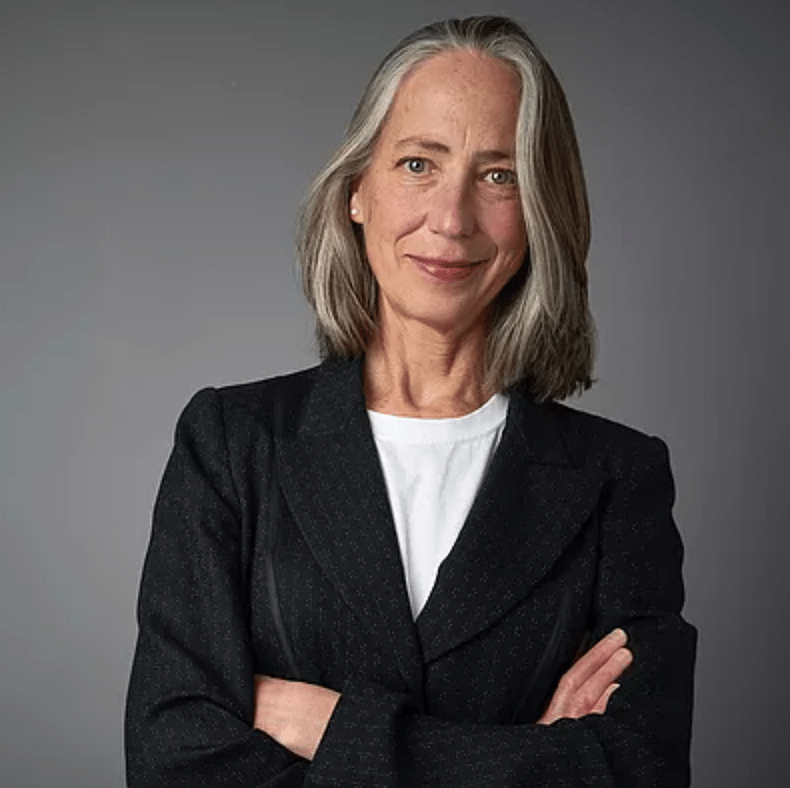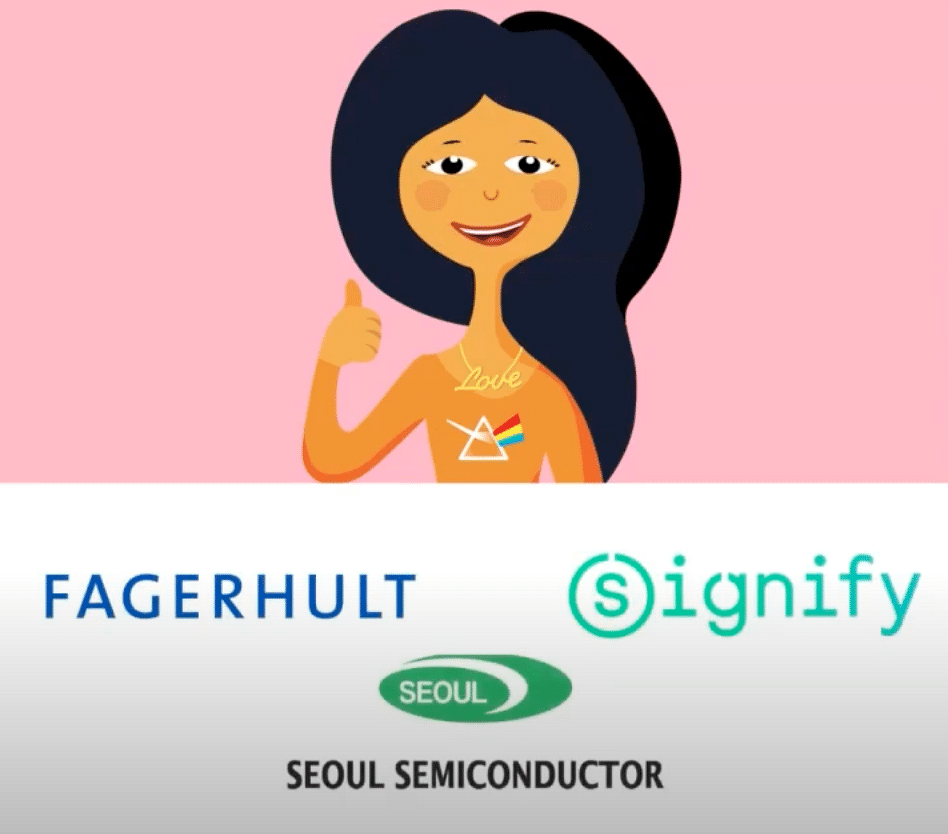
Dr Shelley James’ Luna Golightly project, which attracted 1.5 million views, embodies key content creation and promotion lessons
By Jim James, Founder EASTWEST PR and Host of The UnNoticed Podcast.
Dr. Shelley James, an internationally recognised expert on light, started the Luna Golightly project during the lockdown. It is a series of “edumercials” or educational infomercials that explain the impact of light on human well-being (e.g., getting exposed to sunlight can lower your need to wear eyeglasses by 40%).

Image from Age of Light Innovations
Learnings Worth Sharing
The Luna Golightly project — which has now garnered over 1.5 million views on social media and has earned sponsorship from major lighting industry players (including Fagerhult, Seoul Semiconductor, and Signify) — began with Dr. Shelley reaching out to experts in the field. She spoke to scientists, education specialists, and manufacturers, and recorded them as a series of interviews.
As it started to build an audience, she invited her resource speakers for a panel debate. It was a rare opportunity to have these experts from different disciplines come together and share precious and powerful information about light. But while these learnings are vital, there was no way for ordinary folks to find them out. This urged Dr. Shelley to take on the challenge and share them with more people.
How Luna Golightly Came Into Fruition
The aforementioned manufacturers, who were previously involved in the interviews, agreed to sponsor the project. With Dr. Shelley on the helm, they came up with the idea of creating the fictional Luna Golightly and other characters to serve as the hosts of their edumercials.

Screengrab from Luna Golightly’s YouTube channel
They also identified the teens as their target audience. The reason behind it is, first, they are affected by the topic; second, they are the sort of people who will act upon something once they learn and understand the need to do it.
To make sure that this project will be independent, Dr. Shelley chose sponsors from different sectors to avoid having competition. This approach also helped ensure that all who are involved are after the same thing: to shed a light on human-centric lighting.
She also brought in scientists to take part, making the project solution-driven. Luna Golightly is not about selling products but making a difference.
Having identified the audience and enlisting resource persons, Dr. Shelley next created a focus group composed of teens. The goal is to learn what these people are interested in and which method would work best in terms of delivering the learnings that she wanted to share.
Getting Help from Online Tools
Dr. Shelley used online design tools to create the project’s avatars. For the main video content, she tried creating hand-drawn cartoons and storifying them using various online applications, before settling with Lumen5. Lumen5 is a time-efficient platform that allows you to create videos with a poppy aesthetic.
Based on feedback from her focus group, Dr. Shelley learned that their initial idea of doing a narrative took too long to deliver the message. This prompted her and her team to opt for a more straightforward formula. Creating content in a format that appeals to the target audience is in consonance with one of the key elements that EastWest’s SPEAK|PR program intends to impart.

Screengrab from Lumen5
Another learning that Dr. Shelley got from her focus group is that the topics that the teens wanted to know are also in line with the products of her manufacturer sponsors. Though this isn’t part of the agenda, it’s a good coincidence that she was able to get after having sponsors onboard that are really passionate about light.
Using feedback from the teens, Dr. Shelley and her team were able to come up with impactful content — one that uses visual language, has the right length, and features topics that really sparked the interest of their audience.
Boosting Video Performance
Currently, Luna Golightly has a presence on Facebook and Instagram — platforms which they identified as where their target audience is. The project has videos that are 40-second and 1.5- to 2-minute long (the latter covers practical solutions). The campaign also features interviews with scientists to tackle underlying concepts.
Dr. Shelley observed that their 2-minute videos discussing more technical topics such as flickers and headaches are getting significant attention (they comprise about 49% of their project’s total watch time).
They also obtained week-by-week data from their social media platforms and adjusted their content elements based on them. For instance, when they changed the title of one particular video, the click-through rate went from 7.5% to 13%. When they replaced one of their thumbnails into a photo of a dad, the post became one of their top-performing content. By monitoring social media analytics, you can quickly get feedback, adjust certain things, and spend on advertisements to improve your content’s performance. In the SPEAK|PR Program, this is called amplification.

Image from Unsplash
In terms of advertisement campaigns, they initially placed ads separately on Facebook and Instagram. Then they tried placing Instagram ads via Facebook. With this, their Facebook videos got 12% to 20% click-through rates while Instagram reached 6% to 9%. Though they tallied lower reach, they garnered higher click-throughs and engagement. The key takeaway here is that fine-tuning your campaigns and content can make a massive difference.
Having Confidence in Your Ideas
When Dr. Shelley was only starting the Luna Golightly project, she first went to a couple of big agencies to help her out in the production (She previously had stints working in big agencies). She also tried reaching out to smaller agencies. Either way, she learned that she’d need to spend thousands of pounds to turn her ideas into reality.
If you cannot go top dollar to produce the content you want to share, you need to look for other ways. If you have confidence in your ideas, use the available tools online and go out there. After all, you’re in the realm of things where you can take a chance. When Dr. Shelley started sharing the content that she created using online tools with her sponsors, she was still able to get a positive response.
What also helped her is the very movement where her project falls into. When the pandemic hit and companies got money that they needed to mop up, they re-allocated their budget and pivoted them to meaningful causes, such as Luna Golightly.
Building Relationships Goes a Long Way
When it comes to negotiating with sponsors, building a relationship is key. When Dr. Shelley first began Luna Golightly, she didn’t even know the people who eventually sponsored her project. All she did was to reach out and offer them a platform. Through offering interviews, she was able to speak to them and introduce her cause in the process.

Image from Unsplash
Taking inspiration from her experience, she advises meeting people who are passionate about the topic you’re talking about or promoting. Give them the benefit of the doubt and set expectations. These will help you convince them that you’re working altogether for the right reasons.
Also, you have to be clear that you’re a team. Offer an environment that fosters collaboration and resource-sharing. For instance, Dr. Shelley, for her part, offers content that her sponsors can use during their own sales pitches, trade fairs, and other similar events wherein they have to break the monotony of a PowerPoint presentation. She shows that she and her stakeholders are collectively on the same journey of shifting people’s attention into human-centric lighting.
After getting traction for her Luna Golightly project, Dr. Shelley is now on the next phase: To bring her campaign closer to architects, specifiers, and other decision-making figures. To find out more about this initiative, visit www.ageoflightinnovations.com. And if you’re finding solutions for your own project, keep in mind that it’s more important to be more resourceful than to have a lot of resources.
This article is based on a transcript from my Podcast The UnNoticed, you can listen here.
Cover photo by Annie Spratt on Unsplash.

